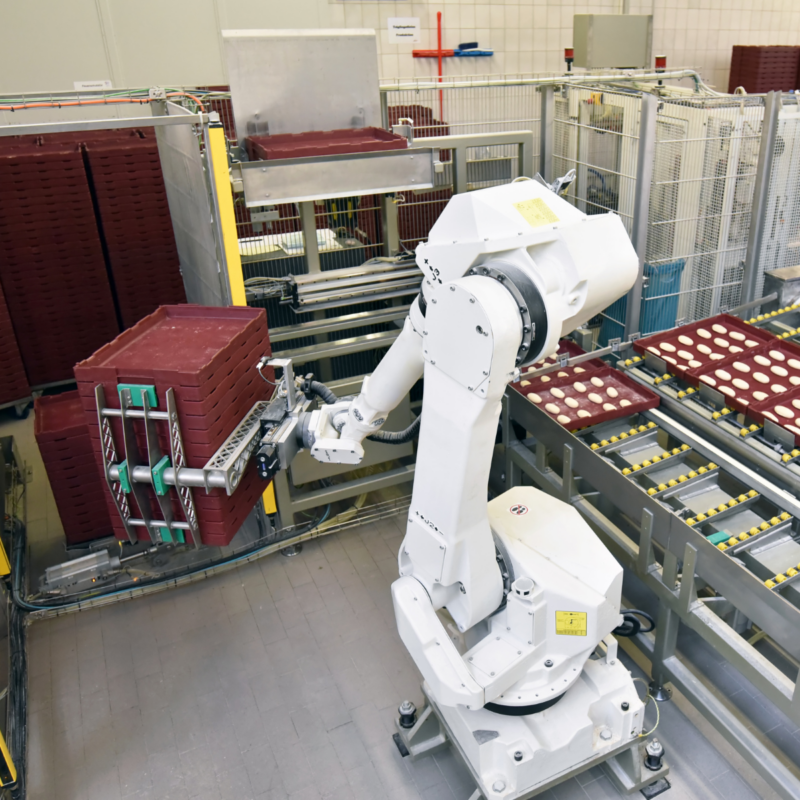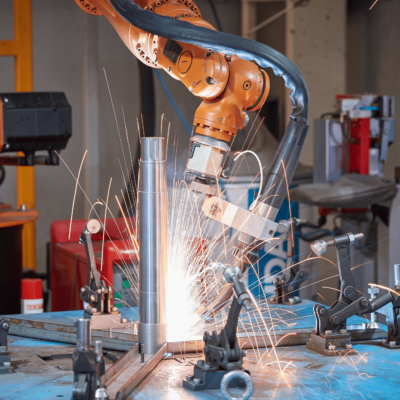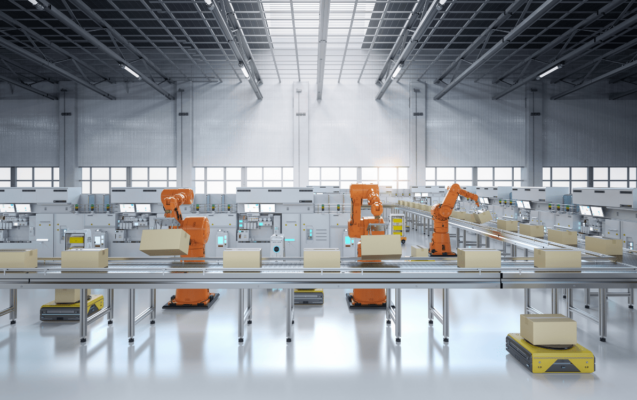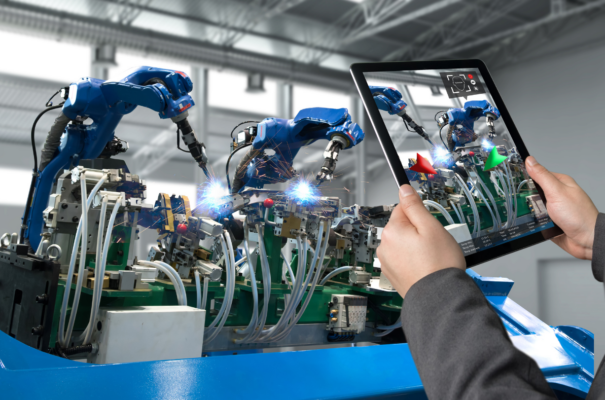In today’s world, technology is everywhere, and robots are becoming more important in different jobs. Let’s explore the world of robots and find out what makes regular robots different from Collaborative Robots, also called Cobots. This will help us understand their special features and how people use them.
Regular robots are often used in factories and do specific tasks like moving things or building things. On the other hand, Cobots are newer and can work with people. They help make work easier and safer for humans.
In this journey, we will learn about these robots, what they can do, and where they are used. It’s like going on an adventure to discover how robots are changing the way we work and live. So, let’s start our journey into the world of robots!
What is a Cobot?
A Cobot, is a robot designed to work with people. Unlike industrial robots, Cobots are made to be safe around humans. They have sensors that help them know when a person is nearby, so they can slow down or stop to avoid accidents.
Cobots are easier to program and can be used for many different tasks. They are not as powerful or fast as industrial robots, which makes them safer to work with. People can teach Cobots what to do without being experts in robotics. These robots are great for jobs where people and robots need to work together, like assembling things or checking for quality.
Then What is an Industrial Robot?
An industrial robot is a specialized machine used in factories. It does tasks that need to be precise and repeatable, like welding or moving heavy things. These robots can come in different sizes and shapes. Some are big and used in car factories, while others are smaller and used in making electronics.
These robots are good at doing the same task over and over again. They are very accurate and can work fast. But they usually work separately from people because they can be dangerous. There are safety measures like fences or sensors to keep people safe when they are around industrial robots.
What Sets Them Apart?
Cobots team up with people to make automation safer and better. They have some key differences from traditional robots:
1. Safety:
Cobots are designed to work safely with people by using sensors and soft edges. This helps them work closely with humans while reducing risks. In contrast, traditional robots use barriers and focus on efficiency, but they have fewer safety features.
2. Flexibility:
Cobots are versatile, lightweight, and fit various tasks and environments. Traditional robots are less flexible, built for specific jobs, and harder to move.
3. Programming:
Cobots are simple to use, can be easily reprogrammed, and many employees can operate them. On the other hand, traditional robots typically need complex programming, extra equipment, and are more challenging to learn.
4. Costs:
Cobots cost less to start, with lower setup expenses, and offer faster returns on investment (ROI). Traditional robots may demand a larger initial investment but can deliver better ROI in certain cases
5. Payload & Speed:
Cobots move more slowly and do lighter jobs to stay safe. Traditional robots are faster and can handle heavy things, good for tough manufacturing tasks.
6. Working with People:
Cobots need people for things like programming and maintenance. Traditional robots can work on their own once they’re set up.
7. Different Environments:
Cobots can adapt to different places. Traditional robots need specific conditions and extra safety steps.
8. Expertise :
Cobots can change and be set up for different jobs. Regular robots are very specialized, sticking to one type of task.
9. Lifespan:
Regular robots are made to be durable in harsh conditions and last a long time. Cobots, on the other hand, focus on being flexible and adaptable.
10. Safety Rules:
Cobots have strict safety rules when they work with people. But regular robots might have fewer rules when they’re in places where there are no people around.
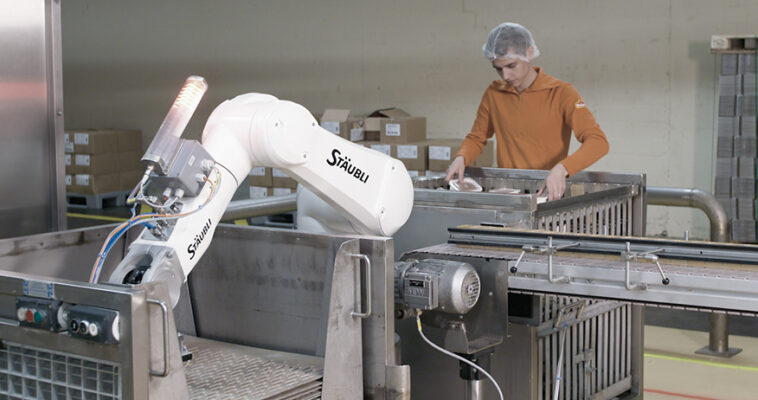
Stäubli’s TX2-Series in Action
Deciding Between Cobots & Industrial Robots:
When you have to choose between Cobots and traditional industrial robots, think about these important things:
1. Industrial Needs:
Your choice depends a lot on the industry you’re in and the specific needs of your manufacturing.
2. Type of Task:
Figure out whether your manufacturing needs is constant or changes.
3. Work Conditions:
Think about things like having limited space, working with people, and the place where you work.
4. Workforce Skills:
Check if your team knows how to code. Cobots are easy to program, which helps if your team isn’t skilled in coding.
5. Automation Goals:
Be clear about your aims. Do you want to make things safer, more efficient, or reduce repetitive tasks?
Switching to Collaborative Automation:
Cobots are gaining popularity lately. They are versatile, easy to use, and bring many benefits to the workplace.
It’s important to know that Cobots aren’t here to take jobs from humans but to work alongside them.
They are great at tasks that are repetitive, hard on the body, or could be risky. In many industries, Cobots have shown they can handle jobs like picking items, working on assembly lines, taking care of machines, packing, packaging, moving stuff, and restocking shelves.
Balancing Cobots & Traditional Robots:
Cobots have their benefits, but traditional industrial robots are still very important in automation. They excel in tough manufacturing jobs that require precision, speed, and handling heavy things. They are especially good at tasks like welding, painting, assembling, and moving materials.
Future of Automation:
The automation world is changing fast, and Cobots are becoming more important.
In 2020, the International Federation of Robotics (IFR) said that the number of industrial robots sold worldwide reached 420,000, which was 4% more than the year before. This growth is because more and more industries are using Cobots.
Likewise, a report from MarketsandMarkets predicts that the market for collaborative robots will keep growing at a steady rate, by 41.8% from 2021 to 2026, reaching a value of $8.4 billion. This means that more people are using Cobots in manufacturing and other fields.
Conclusion:
In automation, Cobots and regular robots team up, combining their unique abilities to make manufacturing better.
As automation improves, their roles mix, creating exciting opportunities. To make the best choice, consider your industry’s needs and understand the differences between them. This will lead to a more effective and safe automated future that suits your needs.
To learn more about Cobots & Industrial Robots.
Are you looking for a System Integrator?
Visit Qviro
